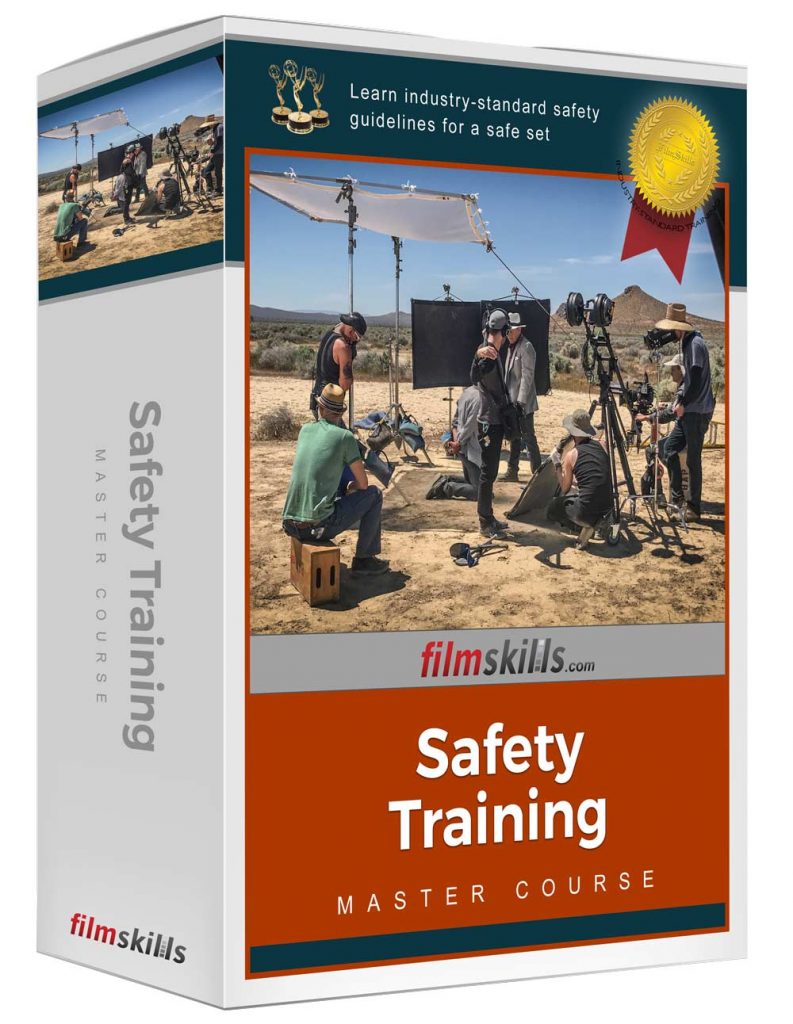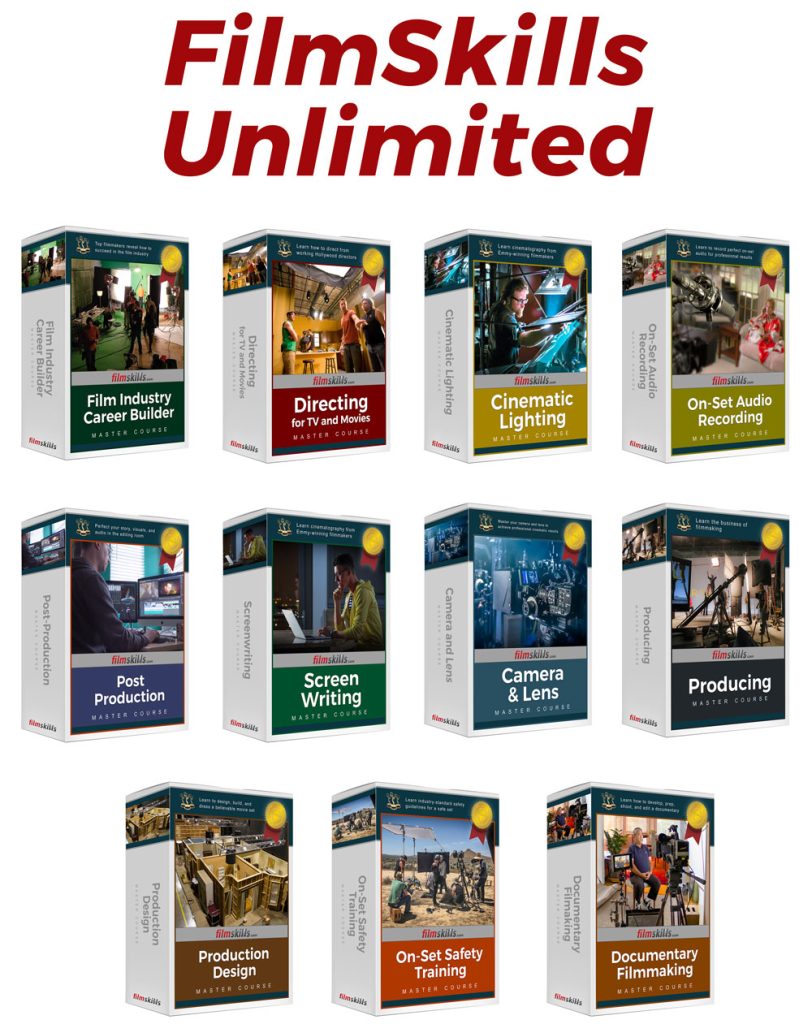The Complete Filmmaking Curriculum
Over a hundred Hollywood professionals helped build a comprehensive filmmaking curriculum.

Safety Training
Introducing a comprehensive safety training program based on the California Safety Pass program and taught be several of its instructors. Designed to increase on-set safety awareness and reduce liability, students learn industry best safety practices.
Safety is an Attitude
This module covers individual crew member responsibility towards safety, how human factors contribute to accidents and how they can be prevented. Students learn actions on how to create a safe environment on set. (20:27)
On-Set Safety
Students learn to conduct safety meetings, proper clothing, drug and alcohol policies, safety bulletins, and how to maintain an organized set. Students learn the fundamental principles of creating a working safe environment. (34:55)
Studio Facilities Safety
Students learn how to maintain a safe environment when working on a soundstage - from maintaining fire lanes and working from a height, to working with combustible materials and maintaining a safety protocol. (19:42)
Lighting Equipment Safety
Lighting Equipment Safety (24:23) From high-output lights and dimmer boards, to HMIs and working with light stands, this module covers the hazards and safe practices of working with lights and electrical equipment. (24:23)
Location Safety
Students learn how to assess the hazards of a location - from environmental to animal hazards. We discuss how to work safely alone, how to safely work on rooftops, around the public, and how to make a location safe for production personnel. (18:51)
Electrical Safety I
Students learn how electricity and circuits work, about proper grounding and polarity, and how little electricity is needed to electrocute an adult. This module reveals how to map the circuits in a location and calculate safe loads, and what happens when power demands exceed the internal wiring of a structure. (32:19)
Electrical Safety II
Working around high voltage wires can, and has been, deadly. In this module, students learn proper guidelines for working around high voltage power sources, how to spot faulty equipment and correctly use cords and outlets, including in high-traffic areas. Students learn about the risks, and effects of electric shocks, electrocution, electric fires and how to prevent them. In addition to preventative measures, this module covers emergency medical procedures in the event of shock or electrocution. (22:28)
Vehicle and Roadway Safety
This module teaches students proper safety protocol for working around public roadways, when the road is used in the scene, or the crew is shooting near a roadway. (16:37)
Shooting in Moving Vehicles
Students learn proper safety procedures when shooting driving scenes on a public street - from the poor-man’s process to process trailers, this module covers every aspect of what to do and what not to do. (20:12)
Grip and Rigging Safety
Students learn proper rigging safety techniques - from hanging overhead lights and properly securing a 12x12 in a breeze, to proper knots, securing stands, and ensuring all rigs are safe on set. (25:34)
Vehicles, Lifts, and Tools
Students learn the safety procedures for working with hand power tools, ladder and scaffold safety, the safe operation of truck lift gates and aerial lifts, and how to work around production vehicles. (18:49)
Weapons and Props
A dangerous and frequent problem in film schools is the improper use of prop weapons, which can be illegal and deadly. In this module, students learn how to properly use weapons (and prop weapons) on camera, from handling procedures, to employing a qualified armorer, to dealing with the public and working with local officials. (25:13)
Pyrotechnics and Special Effects
This module explores the proper and safe procedures for working with squibs, explosives, fire, smoke and fog, and other types of atmospheric effects. Students learn the dangers of working with pyrotechnics, the proper permitting process and how to hire an experienced, trained pyrotechnician. (23:51)
Environmental Safety
Students learn how to recognize, prepare for, and work in various environmental situations - from shooting in extreme heat to extreme cold, to working around water and in locations where there may be health hazards. Students learn how to recognize and react to symptoms of heat stroke and frost bite, unstable structures and locations with airborne contaminants. (27:27)


